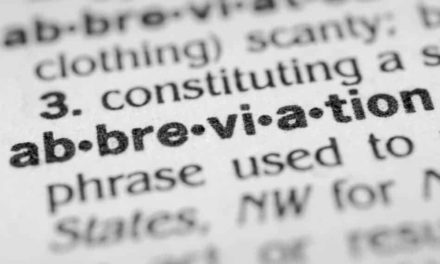Professional Tips on How To Write an Annotated Bibliography
Most researchers and their students are familiar with compiling bibliographies and lists of references for the papers they submit for publication and grading. How to write an annotated bibliography, on the other hand, may be a less familiar process for some academics and scientists, and many university students will not have heard of an annotated bibliography until they are expected to prepare one for a research project or course assignment. Some tips on how to write an annotated bibliography will clarify the process.
When considering how to write an annotated bibliography, a good place to begin is with the complete bibliographical references for all the books, articles, reports and other documents that will be included in the bibliography. Each and every reference should not only be accurate and thorough, but also appear in an appropriate documentation style for the discipline and observe the specific publisher’s or instructor’s guidelines for how to write an annotated bibliography. References might be arranged alphabetically, organised chronologically by date of publication, assigned numbers for an orderly presentation or even divided into sections based on different topics or categories, but an effective and consistent system that meets the requirements must be established and maintained.
Each reference in an annotated bibliography is normally followed by an annotation, which is a commentary on that particular source. The annotation might be very brief (only a sentence or two, for instance) or rather long and detailed (up to two pages in some cases), and while it often starts on a new line beneath the reference, it can instead appear immediately after the reference in the same block of text. These and other details about how to write an annotated bibliography, such as the number and kinds of sources that should be included, are often specified in an instructor’s or publisher’s guidelines. If they are not, choosing sources, styles and formats appropriate for your topic and material and using them with precision and consistency throughout the annotated bibliography are essential.
Studying the relevant instructions will also be important for designing the content of the annotations as you learn how to write an annotated bibliography. Each study is unique and annotated bibliographies are produced for a variety of different reasons, so the material provided in the annotations can vary considerably, but the content usually consists of one or more of the following three types of information:
1. Descriptive summaries of the sources. Although these sound straightforward, simply listing the topics discussed in an academic or scientific study is not an effective strategy for how to write an annotated bibliography. The point is to tell readers about the research problem, the methods used to address it, the findings obtained, the conclusions drawn and the main argument developed in each of the sources. If the guidelines you are following indicate that descriptive information is all that is required for your annotated bibliography, critical and evaluative commentary will not be necessary, though it is always wise to highlight content of special relevance to the particular research project, publisher or course for which the bibliography is written. Annotated bibliographies in the sciences are rare, but when they are written their annotations tend to be exclusively descriptive, so summarising and paraphrasing may constitute the primary approach for how to write an annotated bibliography in the sciences.
2. Critical evaluations of the sources. Guidance on how to write an annotated bibliography varies with regard to the inclusion and nature of evaluative material, but if a critical assessment of each source is required, it usually follows the descriptive summary and should be based on close critical reading and thoughtful reflection. Many helpful questions can be asked as you read and reflect. Is the research problem clearly articulated? Are the authors qualified to investigate the problem? Is the methodology valid? Are the findings analysed and interpreted in a logical fashion? Are the conclusions and implications reasonable? Is the overall argument coherent and persuasive? Some guidelines on how to write an annotated bibliography will recommend comparing and contrasting sources, which can be an excellent way to clarify critical comments and provide useful information about patterns, trends, debates, gaps and other aspects of the scholarship on a topic.
3. Comments on the value and usefulness of sources. This kind of commentary often considers the value of each source in two different ways: its contribution to the larger body of scholarship on the topic, and its usefulness in relation to the research project associated with the bibliography. If there is no larger research paper or project associated with an annotated bibliography, highlighting the significant contributions of each source to knowledge, research and practice in the field will usually suffice. If, on the other hand, the annotated bibliography is an early step in a longer research project, it will be necessary to explain how aspects of the individual studies will influence your research. Methods used by other investigators might be adopted or adapted; experimental results and other evidence might be used to justify your research or support your findings; interpretations and conclusions might change your ways of thinking and help you formulate better research questions. The possibilities are endless, but foresight and specificity are always essential when determining how to write an annotated bibliography that requires this sort of information.
Finally, once you have drafted your annotated bibliography, be sure to take the time to check, correct and revise your work. Pay special attention to accuracy in bibliographical references and in summaries and paraphrases of sources. Ensure that your critical comments and evaluations are clear, logical and relevant. Proofread your writing for mistakes in grammar, spelling and punctuation, and watch for factual and typing errors as well. Remember that a manuscript riddled with errors and inconsistencies will never present its author as an authoritative and accomplished researcher or be a successful answer to how to write an annotated bibliography.
You might be interested in Services offered by Proof-Reading-Service.com
Journal Editing
Journal article editing services
PhD Thesis Editing
PhD thesis editing services
Expert Editing
Expert editing for all papers
Medical Editing
Medical Editing Services
Research Editing
Research paper editing services
Book Editing
Professional book editing services

















